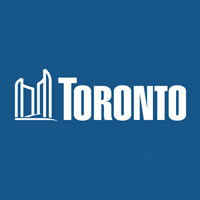Yes/no
When planners ask for a Block Context Map, which is what this is, they are looking to see the street grid, major opens spaces, the proposal at hand, any other proposals that are in process and finally, what we'll call the planning assumptions of the building.
So, most particularly, what do you assume/think will happen to the sites immediately adjacent to and across from your own.
The idea, aside from just being an illustration is to allow planners to easily see how this proposal will relate to what IS next to it, is Likely to be next to it, and may be next to it.
So its to see a the thing in context, literally. It allow for considering whether the developer's assumptions align with those of City Planning, and things like cumulative shadow impacts and demands on infrastructure. But those planning assumptions (for proposals not yet evidenced) are largely (educated) guesses. Some are very well informed (proposals in progress) others are just......"It would make sense if this is what happened next".
Some, plans are very well executed and credible; some have minor problems and some are completely out to lunch, and don't even get the existing context correct.
